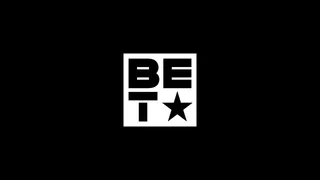Steve Jobs: 14 Most Significant Inventions
The iPhone. The iPod. Take a look at his best creations.

1 / 14
Apple I, 1976 - Apple Computer was founded by Steve Jobs, Steve Wozniak and Ronald Wayne in 1976 and its first computer was created in Jobs’s parents’ garage. It cost $666.66 and was nothing more than a circuit board, handmade by Wozniak, that still needed a monitor, keyboard and power supply. (Photo: Courtesy WikiCommons)

2 / 14
Apple II, 1977 - The company's next commercial product was a fully-assembled desktop computer that featured a display and keyboard and came housed in a more elegant case. (Photo: AP/Apple Computers Inc., File)

3 / 14
Macintosh, 1984 - The Macintosh was the first computer to introduce a mouse and a graphic interface. Now, instead of typing every command, users could click and drag icons on their screen. Their launch was noted by a Super Bowl commercial inspired by George Orwells’s 1984. (Photo: Courtesy MacWorld)

4 / 14
Apple IIc, 1984 - Apple then made desktop computers more accessible with the creation of the Apple IIc, a more compact version of the Apple II that allowed families to bring it into their home. A handle in the back allowed for some portability. (Photo: Courtesy Apple)

5 / 14
Pixar, 1986 - Jobs bought fledgling The Graphics Group (renamed Pixar) from George Lucas for $10 million, with half of the money going into the company. Though Jobs’ first intention was to turn the company into a graphics hardware developer, it later evolved into the successful computer animation studio we know today. With a distribution deal with Disney, Toy Story, which was released in 1995, became the first of a string of award-winning films released by Pixar. In 2006, Disney purchased Pixar for $7.4 billion in stocks. After the merger, Jobs became Disney’s biggest shareholder and sat on its board of directors. (Photo: Courtesy Pixar)
ADVERTISEMENT

6 / 14
NeXT, 1988 - Turmoil within the company led Jobs to leave Apple for several years, during which time he founded NeXT Computer. Its first advanced workstation was released in 1990, but at nearly $10,000 they were much too expensive to be commercially profitable. It ran on a new operating system called NeXTSTEP and appealed to the scientific and academic communities due to its innovative technologies — chiefly its digital signal processor chip and Ethernet port. British computer scientist Tim Berners-Lee wrote the first World Wide Web server and browser on a NeXT box. In 1996, NeXT was sold to Apple and soon Jobs was back in the company that suffered in his absence. (Photo: Courtesy MacWorld)

7 / 14
iMac, 1998 - The translucent curvy iMacs were all-in-one desktop computers that have evolved to the minimal thin-screened desktops the company sells today. (Photo: Courtesy Apple)

8 / 14
iPod, 2001 - The iPod mp3 player revolutionized the way people consumed music on the go and provided Apple with a much-needed revival. The first version featured a clickable scroll wheel and an easy-to-understand interface that made the iPod incredibly popular. Colorful and sleeker casings, touch screens and larger hard drives made their way into the player in subsequent versions. (Photo: Courtesy Apple)

9 / 14
Mac OS X, 2001 - Mac’s operating systems received an upgrade when Jobs was at the company's helm again and he used NeXTSTEP as the basis for what would become Mac OS X. (Photo: Courtesy Apple)

10 / 14
iTunes Store, 2003 - Two years after opening Apple retail stores (of which there are now 300 worldwide), the company introduced the iTunes Store, a virtual shop that allows users to download songs directly onto their computer. (Photo: Courtesy Apple)
ADVERTISEMENT

11 / 14
Intel MacBook Pro, 2006 - The MacBook Pro was the first computer to use the Intel’s Core Duo processing units, which improved speed and allowed Apple laptops to compete with Windows-based ones. (Photo: Courtesy Apple)

12 / 14
iPhone, 2007 - Apple entered the mobile phone arena with a smartphone that could not only make calls, but also play music and browse the Internet. A year later, the App Store allowed developers to create their own programs for Apple’s products and sell them via iTunes. (Photo: Courtesy Apple)

13 / 14
MacBook Air, 2008 - The ultra-thin and light MacBook Air took portable laptops to a whole new level. (Photo: Courtesy Apple)
